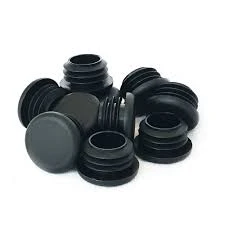Mobile:+86-311-808-126-83
Email:info@ydcastings.com
motor housings
Understanding Motor Housings The Unsung Heroes of Machinery
Motor housings play a crucial yet often overlooked role in the world of machinery and equipment. As protective casings for electric motors and other mechanical components, motor housings are essential for ensuring optimal performance, safety, and longevity. Despite their importance, the intricacies of motor housings are not widely understood, making it worth delving deeper into this essential component.
What Are Motor Housings?
Motor housings refer to the durable enclosures that protect the internal components of electric motors. They are typically made from metals such as aluminum or steel, though some applications may use high-strength plastics or composite materials. The primary function of these housings is to shield the motor from environmental factors like dust, moisture, and mechanical impacts, which can severely affect performance and reliability.
Design and Materials
The design of motor housings is often dictated by the specific requirements of the application they are intended for. Factors such as size, weight, thermal management, and mounting configurations play a key role in shaping the final product. Additionally, efficient design also focuses on airflow around the motor to enhance cooling and prevent overheating, thus prolonging the motor's lifespan.
Materials used in motor housings are selected based on their mechanical properties, weight considerations, and corrosion resistance
. Aluminum, for instance, is popular due to its lightweight nature and good thermal conductivity, while steel may be used in applications requiring higher strength and durability.motor housings

Role in Performance and Safety
The performance of an electric motor can be significantly influenced by the effectiveness of its housing. A well-designed motor housing aids in heat dissipation, minimizes vibrations, and provides a stable mounting structure. Conversely, poorly designed or flimsy housings can lead to increased wear and tear, overheating, and even catastrophic failure of the motor, which in turn can pose safety hazards.
Moreover, motor housings help in containing potential hazards. For example, in applications involving flammable environments, a robust housing can prevent sparks or overheating elements from igniting surrounding materials, thus ensuring a safer operational space.
Industrial Applications
Motor housings are integral across various industries, including manufacturing, automotive, and HVAC systems. In manufacturing, they protect motors that drive conveyors and machinery, while in the automotive sector, they safeguard electric motors found in electric vehicles. HVAC systems rely on motor housings to protect motors powering fans and compressors, ensuring effective climate control in buildings.
Conclusion
In summary, while motor housings may not be the focal point of discussions surrounding machinery, their significance cannot be overstated. These enclosures provide protection, support, and stability to electric motors, directly influencing their performance and longevity. As technology advances, the materials and designs of motor housings continue to evolve, aligning with the demands of modern machinery. Understanding and appreciating the role of motor housings will ensure optimal operation and safety in diverse industrial applications.











